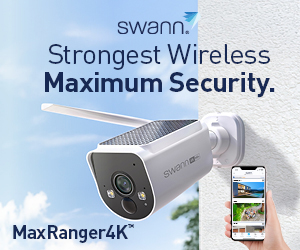Rooftop Solar Part 1 is the first of a four-part series about the journey to installing rooftop solar. We will cover when you need solar, what solar you need, and whether the promise lives up to the marketing hype.
Some 3+ million Australian homes now have rooftop solar, mainly because energy costs are skyrocketing and the push to renewable energy is straining the electricity grid.
Never before has Australia faced the possibility of total power loss, power rationing, and unexpected blackouts. We are not going down the renewable versus coal/gas versus nuclear baseload argument but looking at what Joe and Jane Average can do to ensure continuous supply.
Rooftop Solar Part 1 is a 4-part series that will explore everything from the decision to go solar to a few months after, where we assess whether the economic and supply benefits outweigh the initial capital cost. It follows my journey and friends who have opted for rooftop solar, with and without batteries.
My journey started in 2019
It started when South Australian-based Embertech asked me to review its Emberpulse energy monitoring system. This system comprises a visible Emberpulse alert light that goes from green to orange to tell you immediately if you are using more energy. For the first few months, we frantically switched things off when it was angry orange but gradually learned to schedule stuff like the dryer or dishwasher during off-peak power. It made us energy aware.


There is also a handy EmberIq Smart Plug that can measure individual appliance energy use. This was instrumental in the decision to replace a 2-star fridge with a 4.5-star and 60 x 50W halogen downlights (3000W) with 60 x 5W (300W). Those two changes alone saved hundreds of dollars a year.
Behind the scenes, it is a cloud-based Pulse Analytics system that has most Australian energy plans and records your energy use. It then generates reports that help you determine whether you would benefit from solar panels and, optionally, a battery.
Since its installation in 2019, all that data has graphically shown how much energy is used each day/week/month/year, peak and average loads, and, importantly, baseload (how much you use with most things turned off), average load, and peak load (how much you need to power the home with most things on).

This year, our average consumption was 742.9 watts per hour, with the peak load at 5,595 watts (during summer, we had a ducted air conditioning unit). Significantly, our consumption grew from an average of 490.8 watts per hour in 2019.
If you want to read my Emberpulse 2019 journey, it is over at GadgetGuy’s site.
Data is power
I had Emberpulse to guide me, and in 2022, at the height of Covid and working from home, it indicated rooftop solar was the best option.
Most people only have the quarterly electricity bill, which should show how many kWh (kilowatt hours or 1000 watts for an hour) you use and compare it to the same period last year. That is not the whole story because that power is charged at (these are at 12/24 and expected dramatically rise in 2025)
- Peak (Approx. 60 cents per kWh)
- Shoulder (Approx. 35 cents per kWh)
- Off Peak (Approx 30 cents per kWh)
- Daily Supply Charge (around $1-$1.20 per day)
In 2019, power was 25 cents for peak, and daily supply was 75 cents. A typical summer quarter costs $400, now $800.
The big lure – Go solar and get feed-in payments
From 2019-2023, the lure was that rooftop solar could pay for itself in a few years from the generous energy feed-in tariffs of 10-20 cents per kWh exported to the power grid. A cheap 5kW solar system cost around $5000, and online calculators showed payback in 5-7 years. Batteries were expensive and, on a feed-in tariff basis, had far longer payback periods – often more than the battery’s lifespan.
Well, we now have over 3 million homes with rooftop solar, and the feed-in tariff is about 0-5 cents, with many capping feed-in to 3.5-5kWh per day. Most states are looking at remotely switching off feed-in when the grid does not need it, reducing feed-in income to a trickle. Conversely, this makes a battery more desirable.
The rationale for rooftop solar has moved from how many dollars you can save to how much energy you can create and intelligently use to power the home, EV, pool pump and maximise ROI. This is even more critical for all-electric homes that need guaranteed, constant supply.
OK, I want rooftop solar – enter the Cowboys
Like most people, I was drawn in by the sports or celebrity-backed solar panel installers with giant TV advertising budgets and incentives to order today. Unlike most people, I wanted to know more about the technology before committing. The answer from most companies is a condescending paraphrase: “You want the truth. You can’t handle the truth.”

Regrettably, what I found shocked me, and all is revealed in Rooftop Solar Part 2 – What You Should Know Before You Start.
- Is your home right for solar?
- What size do you need?
- Panel options and what to look for.
- String VS microinverter VS Hybrid, controllers and Apps.
- Choosing an installer.
- Choosing an energy company.
- Do I need a battery?
- EV charging options.
- Pitfalls to watch out for.
Rooftop Solar Part 3 – working as it should covers
- Panel choice.
- Inverter choice.
- Battery choice.
- Installer choice
- Photos of the build process.
- Pitfalls to watch out for.
Part 4 will cover
- Real-world results
- Observations on the roof-top solar journey
We also wrote a guide Rooftop solar for strata to cover those specific issues.
If any readers want to contribute their stories, please get in touch with me at [email protected].
CyberShack off-grid news and reviews
Rooftop Solar Part 1









17 comments
Angus Chard
I love your show Charlie and cybershak! long term listener and subscriber.
Hope you can help me with this. I live in a semi at Bondi and unfortunately my roof faces south. I have had numerous contractors come around to quote and inspect my circumstance. They seem to think that i will only achieve about 40% efficiency du to the roof angle even if i put the ugly scaffolding up to improve the angle of the panels. Shirly their must be a solution for those whose roofs face south?
Ray Shaw
Hi Angus (Ray for Charlie)
I assume that your roof is north-south (rather than 100% south-facing) so that the sunrise hits the east side until noon and the sunset hits the west side – 40-50% efficiency. Let me know if that is wrong. The roof angle is also a huge issue. There are a few options, but all are costly. The roof could be redesigned to have north and south facing, but this requires a roofing expert and probably a Council DA. I had to do a redesign of my roof from hip to gable, and it was not all that expensive ($20K), as I used Viridian UK solar panels as the roof cladding. The other issue is to use microinverters instead of a single string inverter will maximise output. If you want to send the roof design/orientation to me at [email protected] we can look further.
Kris Hume
Hi
We live in post code 2110. Our house is surrounded by 3 very large trees – one on council land and little hope of pruning anything. We worry about the amount of shade and want guidance about a solar technology that would suit a tiled roof. We are east-west facing. Also a reputable recommendation/s for installers.
Ray Shaw
Hi Kris
Trees are a huge issue as they shade the panels and reduce the solar output to that of the lowest panel. The only way around that is to use Enphase microinverters that treat each panel separately and allow each to contribute the most power it can. East-west is also an issue as you get morning sun on the east and nothing on the west, and in the afternoon, vice versa. My best advice is to contact Penrith Solar https://www.pscenergy.com.au/ (I use these guys) or go to the Enphase installer page https://enphase.com/en-au/installer-locator and put in your postcode.
Kris
Brilliant, thank you for your prompt response
Barry Coburn
Can you please provide Solar providers and Installers to contact for solar for my home. We are in Moama NSW 2731
Ray Shaw
Johnstone Electrical & Sunvalley Solar https://www.johnstoneelectrical.com.au/ (I understand they are the best).
Future NRG Pty Ltd https://futurenrg.com.au/
Watters Electrical Pty Ltd https://www.watters.com.au/solar/
All are in Shepparton. Look for Enphase accreditation.
Nicky
Hello just checking if you can refer me to reputable solar Installers for area code 3191 .. difficult to know who to trust these days with so many cowboys around
Ray Shaw
Hi Nicky
I live in NSW, so I don’t have first-hand experience with Victoria. Go to https://enphase.com/en-au/installer-locator and enter your postcode. I would select a platinum dealer first. They will help educate you on what you need, and then, if necessary, call a couple of other quotes. If I may add on piece of sage advice – Use Enphase micro inverters. Since installing my system, I am getting 20-25% more power than string inverters, and on cloudy days when string inverters are useless, I am still getting enough from a 10kW system to get through the day.
William
I want to know who to approach to install solar for my home
Ray Shaw
Hi William
The short answer is that we don’t usually provide recommendations. However if let me know your postcode and I will see if I can find a reputable installer.
Kevin
I received your Rooftop Solar Part 1 via a separate link and I would like to get parts 2,3 and 4. Can you please send them to me?
Ray Shaw
Hi Kevin
Part 1 has been published. Part 2 will be later this week (9-13 December). Part 3 is very complex and we expect it to be by late December. Part 4 is 4-6 months after the install where we will analyse summer, autumn and winter use. Sorry but this is a journey. We will advise Life and Technology radio listeners when the next part in posted. Sorry to keep you waiting.
Mark Deason
I would like to know more about EmberPulse
Ray Shaw
Hi Mark
Can I suggest that you read the articles I wrote over at Gadget Guy (link in the article) as they are pretty complete. Then visit its website. I was very impressed and teh monitoring is still working perfectly six years later.
Mark Deason
Would like to know more about cybershack
Ray Shaw
CyberShack has been going since 2006 and before that Charlie Brown was a tech expert and journalist. It has Chanel 9 CyberShack TV, Radio 9 Australia-wide Life and Technology radio, CyberShack.com.au and works with consumer IT vendors for things like unboxing and staff training videos etc. CyberShack.com.au is Australia’s last deep-dive, long form, review site (not behind a paywall). It is 100% independent and will never charge for a review. Ray Shaw, as reviews editor and a senior journalist for more than 45 years cannot be bought! Many reviews use a test panel approach and this broadens their validity. If we have not reviewed a category of device before we will write a guide to what it should do and review it against that. Income for the group comes from mainly CyberShack TV (vendors buy TV time), video production and we offer a strictly limited number of paid small MREC size advertisements on the website.